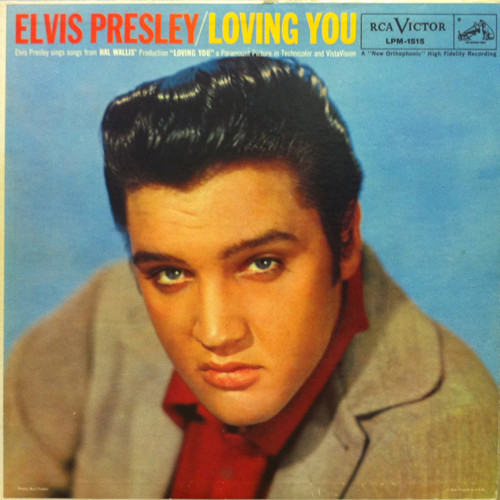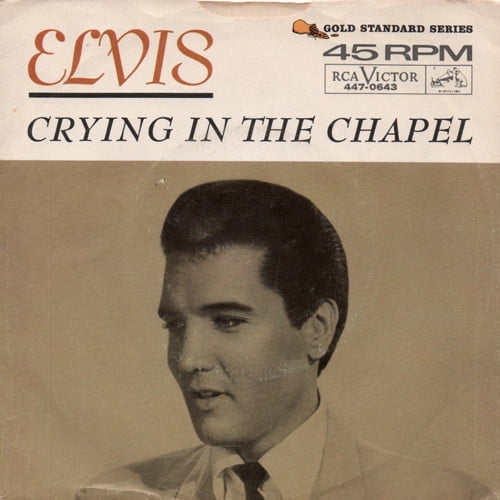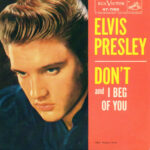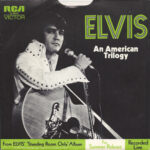When Elvis put aside rock and roll to honor his faith and gospel roots
Introduction
In April 1957, at the peak of his fame and after a series of chart-topping hits that defined the birth of rock and roll, Elvis Presley surprised the world with the release of a deeply spiritual Extended Play (EP): Peace in the Valley.
Released on April 10, 1957 by RCA Victor, this work marked the beginning of a new artistic phase, revealing a more intimate and emotional side of Elvis—one deeply connected to his religious upbringing.
Though the world knew him as the “King of Rock,” this EP proved that Elvis was far more than a teenage idol. It showcased his genuine bond with gospel music, a genre that had inspired him since his early years in Tupelo, Mississippi.
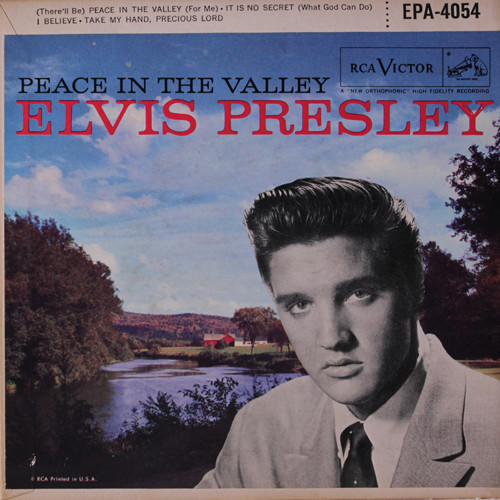
Historical Context
By 1957, Elvis was already a global icon. Following the success of movies like Love Me Tender and Loving You, and hit singles such as Hound Dog and Heartbreak Hotel, he decided to record something completely different: a tribute to the sacred music that had shaped his voice and his soul.
The project was inspired by his heartfelt performance of “Peace in the Valley” on The Ed Sullivan Show on January 6, 1957. Elvis dedicated the song to the victims of the racial conflict at Central High School in Little Rock, Arkansas. The emotional impact of that performance led RCA to produce an entire record of spiritual songs.
Recording and Production
The recording sessions took place at Radio Recorders Studios in Hollywood, California, on January 12 and 13, 1957.
Elvis was accompanied by:
- The Jordanaires, his regular backing vocal group
- Scotty Moore (guitar), Bill Black (bass), and D.J. Fontana (drums)
- Gordon Stoker of The Jordanaires, who also assisted with vocal arrangements
The producer, Steve Sholes, managed to balance the sacred tone of the material with Elvis’s warm and expressive vocal delivery, achieving a sound that was both reverent and accessible.
Tracklist of the EP Peace in the Valley
The Extended Play featured four carefully chosen gospel songs, all of which were among Elvis’s personal favorites:
- “Peace in the Valley” (Thomas A. Dorsey)
- The title track and centerpiece of the EP. A moving, solemn interpretation that became one of Elvis’s most beloved gospel recordings.
- “It Is No Secret (What God Can Do)” (Stuart Hamblen)
- A popular 1950s hymn performed by Elvis with deep sincerity and emotional restraint.
- “I Believe” (Ervin Drake, Irvin Graham, Jimmy Shirl, Al Stillman)
- Elvis gives this inspirational ballad a near-liturgical tone, showcasing his control and vocal maturity.
- “Take My Hand, Precious Lord” (Thomas A. Dorsey)
- One of the most personal and touching tracks, dedicated to the memory of his beloved mother, Gladys Presley.
Cover Art and Presentation
The EP cover portrays Elvis calm and introspective, dressed in a light suit and gazing upward in quiet contemplation. The design was a stark contrast to the youthful, energetic imagery of his previous records.
The title Peace in the Valley and the serene tone of the artwork reflected a message of faith, hope, and peace in turbulent times—both for America and for Elvis himself, who was facing the pressures of sudden superstardom.
Reception and Legacy
Although it was unusual for a rock and roll star to release a religious EP, Peace in the Valley proved to be a commercial and critical success. It reached #39 on the Billboard EP Chart and remained there for several weeks—an impressive achievement for a gospel record.
More importantly, this release became the first step in Elvis’s lifelong connection to gospel music, which he would continue exploring in later albums such as:
- His Hand in Mine (1960)
- How Great Thou Art (1967, winner of the Grammy Award for Best Sacred Performance)
- He Touched Me (1972, also Grammy-winning)
The EP reinforced his image as a versatile performer capable of blending the energy of rock with the heartfelt devotion of gospel.
Cultural and Spiritual Significance
Peace in the Valley was more than a collection of sacred songs—it was a personal statement of faith. At a time when fame and controversy surrounded him, this record revealed Elvis’s humble, grounded side.
The songs evoke the sound of the small Southern churches where he sang as a child, and his voice conveys a profound emotional truth. Critics and fans alike often credit this release with helping to legitimize gospel music within the mainstream, paving the way for other rock and soul artists to embrace their spiritual roots.
Conclusion
The Extended Play Peace in the Valley (1957) stands as one of the most sincere and soulful works in Elvis Presley’s career.
Beyond the electrifying rhythms of rock and roll, here we find an Elvis who is introspective, faithful, and deeply human.
This project not only cemented his relationship with gospel music but also demonstrated his reverence for America’s sacred musical traditions and his ability to blend the spiritual with the popular.
In essence, Peace in the Valley remains living proof that even the “King of Rock” sought, above all, peace within his soul.
Explore our complete Elvis discography with detailed sheets, galleries, and analysis. View discography



